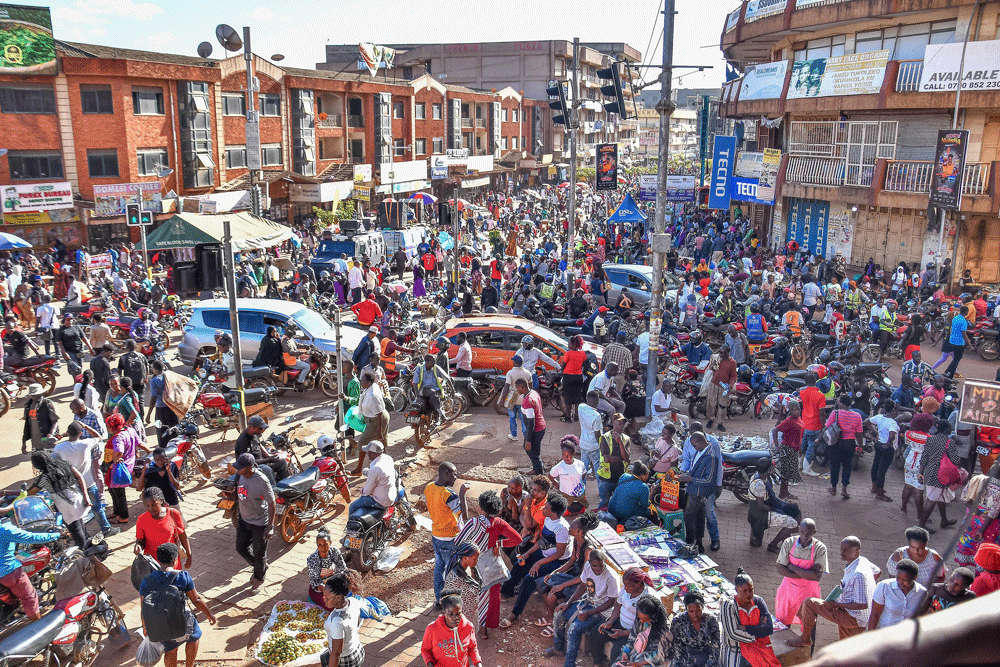Kampala’s population to grow to seven million people

Kampala has experienced rapid population growth in the last 20 years. Photo / Michael Kakumirizi
What you need to know:
- The increase in the population of Kampala is expected to exert more pressure on a city struggling with overcrowding, informal settlements and high unemployment, among others
The population of Kampala is projected to grow by at least 57.8 percent in the next 10 years, signalling increased pressure on a city already facing challenges of overcrowding, informal settlements, high unemployment, poor public services, stretched utility services, and exposure to climate change impacts.
According to various reports, Kampala is also projected to host the largest number of people living in urban areas in Uganda in the 10 years to 2035.
In details contained in the World Population Review, which bases its projections on the latest revision of the UN World Urbanisation Prospects, Kampala is expected to grow from the current day population of about four million to seven million people, driven by a compound growth rate of 5.32 percent.
Kampala continues to be Uganda’s biggest economic and social hub attracting migrant populations from within and outside the country.
Therefore, this has presented complex challenges such as accommodating larger numbers, providing better jobs, housing, and social services for the masses, and enhancing transport and utility infrastructure, which if left unaddressed could destabilise the socioeconomic conditions of the capital.
The UN World Urbanisation Prospects projects that Uganda’s urban population is expected to grow from the current 27.4 percent to 34.4 percent.
However, according to the Uganda State of Urban Sector Report, the National Physical Development Plan projects that Uganda’s total urban population in big settlements of more than 50,000 people will grow to about 24.1 million, of which at least 47 percent or 11.35 million people will be in the central region.
Thus, this means that Kampala, which is part of central Uganda will host at least 61.67 percent of the region’s urban population by 2035.
Western, the report further indicates, will host 5.17 million urban inhabitants of the projected 24.1 million, while urban areas in northern and eastern Uganda will host 4.25 million and 3.43 million people, respectively.
A report by Economist Intelligence (EIU) published last month noted that Kampala is projected to be among the top 20 most urbanised cities in Africa by 2035 and will be among Africa’s middleweight cities that will experience fast-paced growth, supported by infrastructure development and urbanisation, among others.
The report, which ranked Kampala at position 27th as of 2023, noted that Uganda’s capital is expected to leapfrog eight cities, including Kano (Nigeria), Algiers (Algeria), Dakar Region (Senegal), Ibadan (Nigeria), Rabat (Morocco), Yaoundé (Cameroon) and Port Harcourt (Nigeria), to 18th position, while its gross domestic product will expand to $50b at a compound growth rate of above 9.6 percent by 2035.
However, this will be lower than Dar es Salaam’s $80b, and Nairobi’s $70b.
Dar es Salaam, Kinshasa, and Nairobi, which complete the list of four large cities in East Africa, are ranked and will still rank above Kampala in position eighth, 11th, and 13th, respectively by 2035.
The report also indicates that Uganda and Kenyan cities will, by 2035, form the Great Lakes megalopolis, joining the likes of Cairo and Alexandria in Egypt, the southern cluster in Gauteng, South Africa, and two separate clusters in Morocco and Algeria.
Early this week, Mr Vincent Byendaimira, the Kampala Capital City Authority director of physical planning, said government was putting several interventions in place to mitigate anticipated challenges resulting from a surge in population.
For instance, he said, KCCA had put in place a detailed plan for Naguru Medical Hub, construction of roads in Kampala and the Greater Kampala Metropolitan Area funded under the $500m World Bank project, and a transport master plan that is expected to ease congestion.




